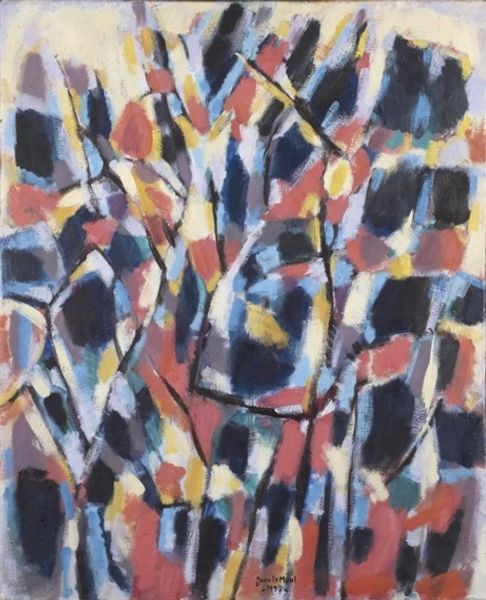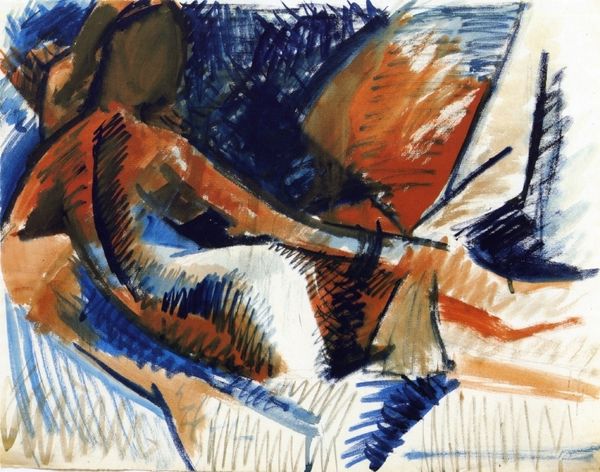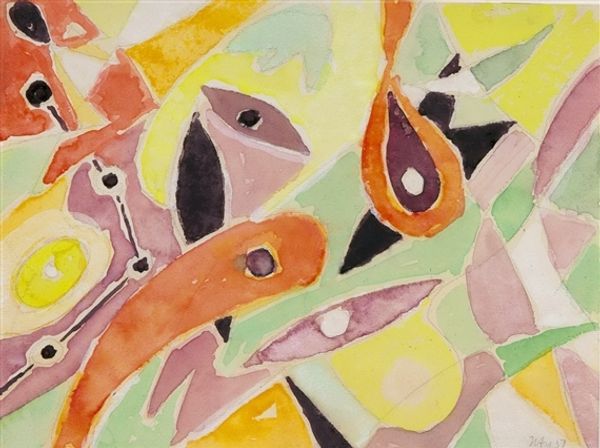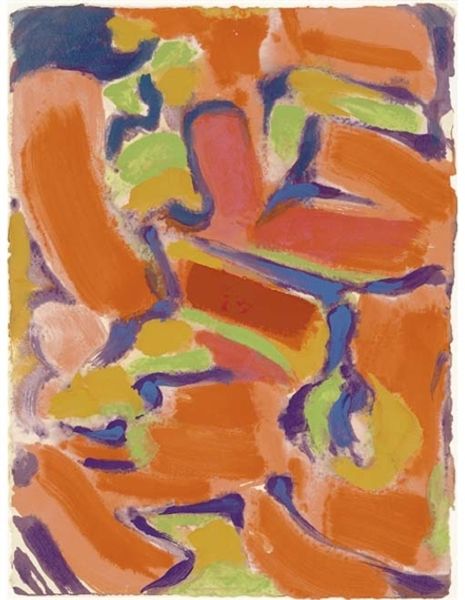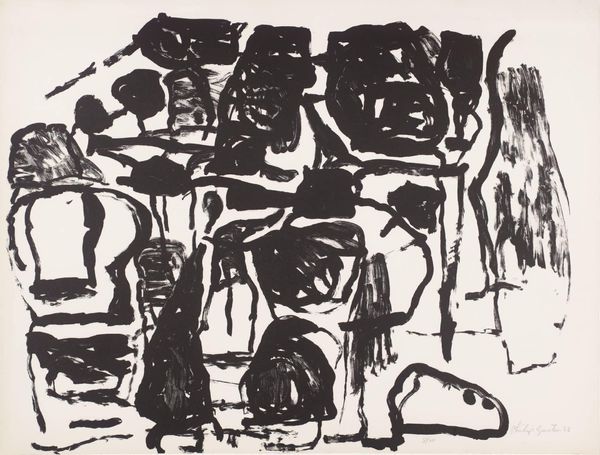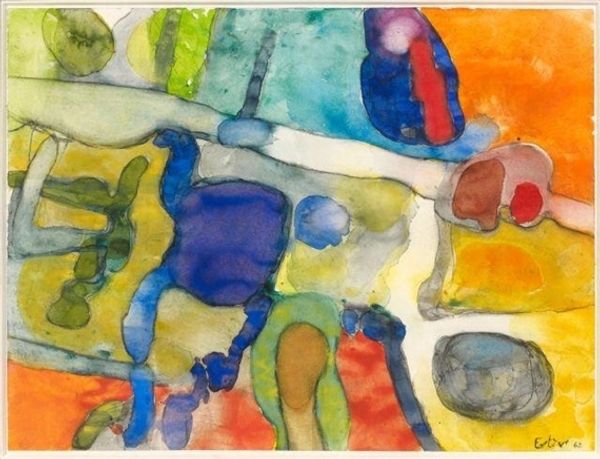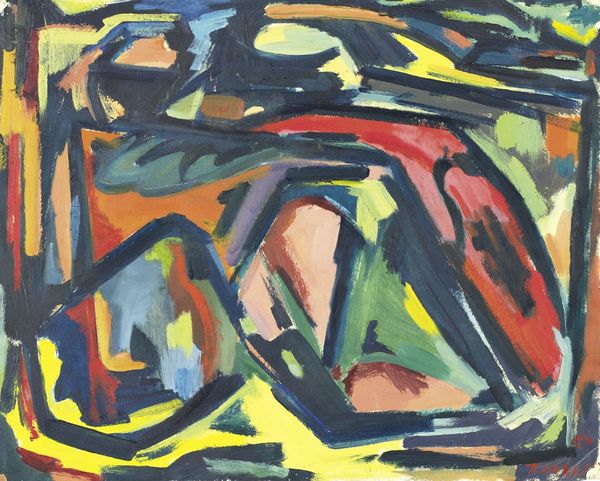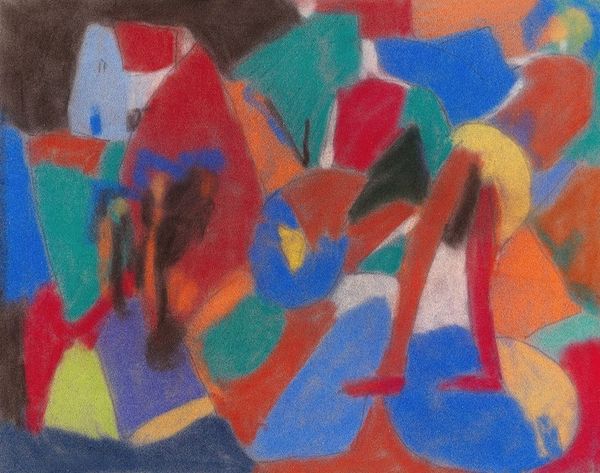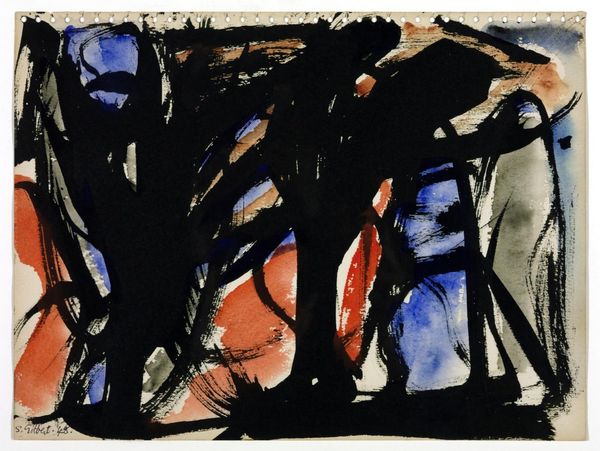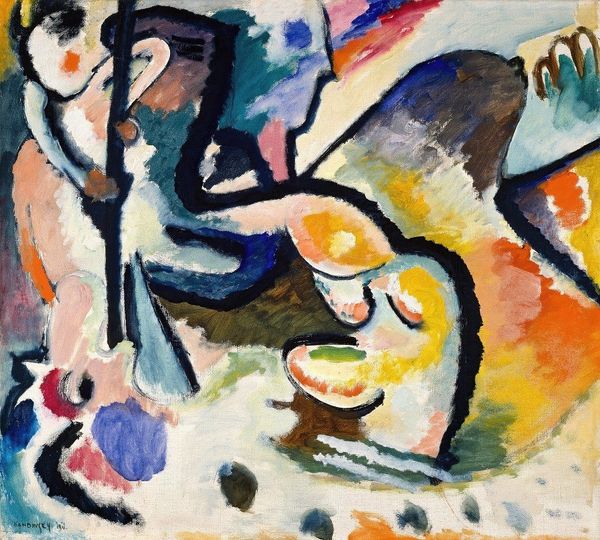
Copyright: Public Domain: Artvee
Curator: Looking at Christian Rohlfs’s “Pilze,” executed around 1920 using both oil paint and watercolor, the immediate impression is one of luminous decay. Editor: Decay is a powerful word choice. I immediately perceive a sense of earthy warmth, almost autumnal in feeling. The forms are somewhat amorphous, yet inviting, like entering a magical grove. Curator: Interesting, and it speaks to the inherent contradictions within Expressionism itself. Rohlfs came to embrace Expressionism later in life, influenced by figures like Emil Nolde, at a time when it had become enmeshed within the politically fraught artistic landscapes following the First World War. These late works, of which this is a poignant example, become exercises in freedom outside conventional artistic structures. Editor: Visually, that sense of freedom certainly manifests in the gestural brushstrokes and bold application of color. The fungi, rendered in earthy oranges and browns, become symbols, almost totemic in their presence. Is there a suggestion of something primal here, connecting with ancient symbolism of growth and transformation? Curator: Absolutely. Consider the broader socio-political context. Rohlfs was later condemned by the Nazi regime, labeled a "degenerate" artist, which drove him further into internal exile. The painting reflects the anxieties and tensions felt by artists operating under increasing oppression, their visions forced to take refuge in abstracted natural forms. Editor: It makes me think of alchemical imagery. Fungi themselves carry complex symbolic weight – growth, decomposition, connection to hidden networks beneath the soil. Here, these humble forms take on greater significance. Curator: Precisely, and in Rohlfs’ hands they transform from simple woodland organisms into a reflection on life’s cyclical nature, a hidden form of protest through the universal symbols found in nature. This particular piece serves as a powerful illustration of his stylistic approach, one which earned him both respect and condemnation during his time. Editor: A potent combination of freedom, fear, and perhaps even hope, distilled into the simple image of fungi on a forest floor. A humble yet powerfully evocative image that continues to resonate. Curator: Yes, it highlights art’s ability to survive and communicate truth, even during periods of political and social unrest.
Comments
No comments
Be the first to comment and join the conversation on the ultimate creative platform.

